Maximizing Antenna Array Aperture Efficiency for Footprint Patterns
Abstract
:1. Introduction
2. Materials and Methods
3. Discussion
3.1. Application to Footprints with Quadrant Symmetry
3.2. Application to Asymmetric Footprints
4. Conclusions
Author Contributions
Funding
Institutional Review Board Statement
Informed Consent Statement
Data Availability Statement
Conflicts of Interest
References
- IEEE Std 145-2013; IEEE Standard for Definitions of Terms for Antennas. IEEE: New York, NY, USA, 2014; pp. 1–92.
- Kim, Y.U.; Elliott, R.S. Extensions of the Tseng-Cheng Pattern Synthesis Technique. J. Electromagn. Waves Appl. 1988, 2, 255–268. [Google Scholar] [CrossRef]
- Botha, E.; McNamara, D.A. A Contoured Beam Synthesis Technique for Planar Antenna Arrays with Quadrantal and Centro-Symmetry. IEEE Trans. Antennas Propag. 1993, 41, 1222–1231. [Google Scholar] [CrossRef]
- Bucci, O.M.; D’Elia, G.; Mazzarella, G.; Panariello, G. Antenna Pattern Synthesis: A New General Approach. Proc. IEEE 1994, 82, 358–371. [Google Scholar] [CrossRef]
- Chou, H.T.; Hsaio, Y.T.; Pathak; Nepa; Janpugdee. A Fast DFT Planar Array Synthesis Tool for Generating Contoured Beams. IEEE Antennas Wirel. Propag. Lett. 2004, 3, 287–290. [Google Scholar] [CrossRef]
- Villegas, F. Parallel Genetic-Algorithm Optimization of Shaped Beam Coverage Areas Using Planar 2-D Phased Arrays. IEEE Trans. Antennas Propag. 2007, 55, 1745–1753. [Google Scholar] [CrossRef]
- Federico, G.; Caratelli, D.; Theis, G.; Smolders, A.B. A Review of Antenna Array Technologies for Point-to-Point and Point-to-Multipoint Wireless Communications at Millimeter-Wave Frequencies. Int. J. Antennas Propag. 2021, 2021. [Google Scholar] [CrossRef]
- Ogurtsov, S.; Caratelli, D.; Song, Z. A Review of Synthesis Techniques for Phased Antenna Arrays in Wireless Communications and Remote Sensing. Int. J. Antennas Propag. 2021, 2021, 5514972. [Google Scholar] [CrossRef]
- Angeletti, P.; Berretti, L.; Maddio, S.; Pelosi, G.; Selleri, S.; Toso, G. Phase-Only Synthesis for Large Planar Arrays via Zernike Polynomials and Invasive Weed Optimization. IEEE Trans. Antennas Propag. 2020, 70, 1954–1964. [Google Scholar] [CrossRef]
- Alijani, M.G.H.; Neshati, M.H. Development of a New Method for Pattern Synthesizing of Linear and Planar Arrays Using Legendre Transform With Minimum Number of Elements. IEEE Trans. Antennas Propag. 2022, 70, 2779–2789. [Google Scholar] [CrossRef]
- Dahri, M.H.; Abbasi, M.I.; Jamaluddin, M.H.; Kamarudin, M.D. A Review of High Gain and High Efficiency Reflectarrays for 5G Communications. IEEE Access 2018, 6, 5973–5985. [Google Scholar] [CrossRef]
- Salucci, M.; Oliveri, G.; Massa, A. An Innovative Inverse Source Approach for the Feasibility-Driven Design of Reflectarrays. IEEE Trans. Antennas Propag. 2022, 70, 5468–5480. [Google Scholar] [CrossRef]
- Savenko, P.O.; Anokhin, V.J. Synthesis of Amplitude-Phase Distribution and Shape of a Planar Antenna Aperture for a Given Power Pattern. IEEE Trans. Antennas Propag. 1997, 45, 744–747. [Google Scholar] [CrossRef]
- Aghasi, A.; Amindavar, H.; Miller, E.L.; Rashed-Mohassel, J. Flat-Top Footprint Pattern Synthesis Through the Design of Arbitrary Planar-Shaped Apertures. IEEE Trans. Antennas Propag. 2010, 58, 2539–2552. [Google Scholar] [CrossRef]
- Elliott, R.S.; Stern, G.J. Footprint Patterns Obtained by Planar Arrays. IEE Proc. H 1990, 137, 108–112. [Google Scholar] [CrossRef]
- Ares, F.; Elliott, R.S.; Moreno, E. Design of Planar Arrays to Obtain Efficient Footprint Patterns With an Arbitrary Footprint Boundary. IEEE Trans. Antennas Propag. 1944, 42, 1509–1514. [Google Scholar] [CrossRef]
- Fondevila-Gomez, J.; Rodriguez-Gonzalez, J.A.; Trastoy, A.; Ares-Pena, F. Optimization of Array Boundaries for Arbitrary Footprint Patterns. IEEE Trans. Antennas Propag. 2004, 52, 635–637. [Google Scholar] [CrossRef]
- López-Álvarez, C.; Rodríguez-González, J.A.; López-Martín, M.E.; Ares-Pena, F.J. An Improved Pattern Synthesis Iterative Method in Planar Arrays for Obtaining Efficient Footprints with Arbitrary Boundaries. Sensors 2021, 21, 2358. [Google Scholar]
- Elliott, R.S.; Stern, G.J. Shaped Patterns from a Continuous Planar Aperture Distribution. IEE Proc. H 1988, 135, 366–370. [Google Scholar] [CrossRef]
- Elliott, R.S. Antenna Theory and Design, Revised Edition; IEEE Press: Piscataway, NJ, USA, 2003. [Google Scholar]
- Silver, S. Microwave Antenna Theory and Design; MIT Rad. Lab. Series; MIT Radiation Laboratory: Cambridge, MA, USA, 1939. [Google Scholar]
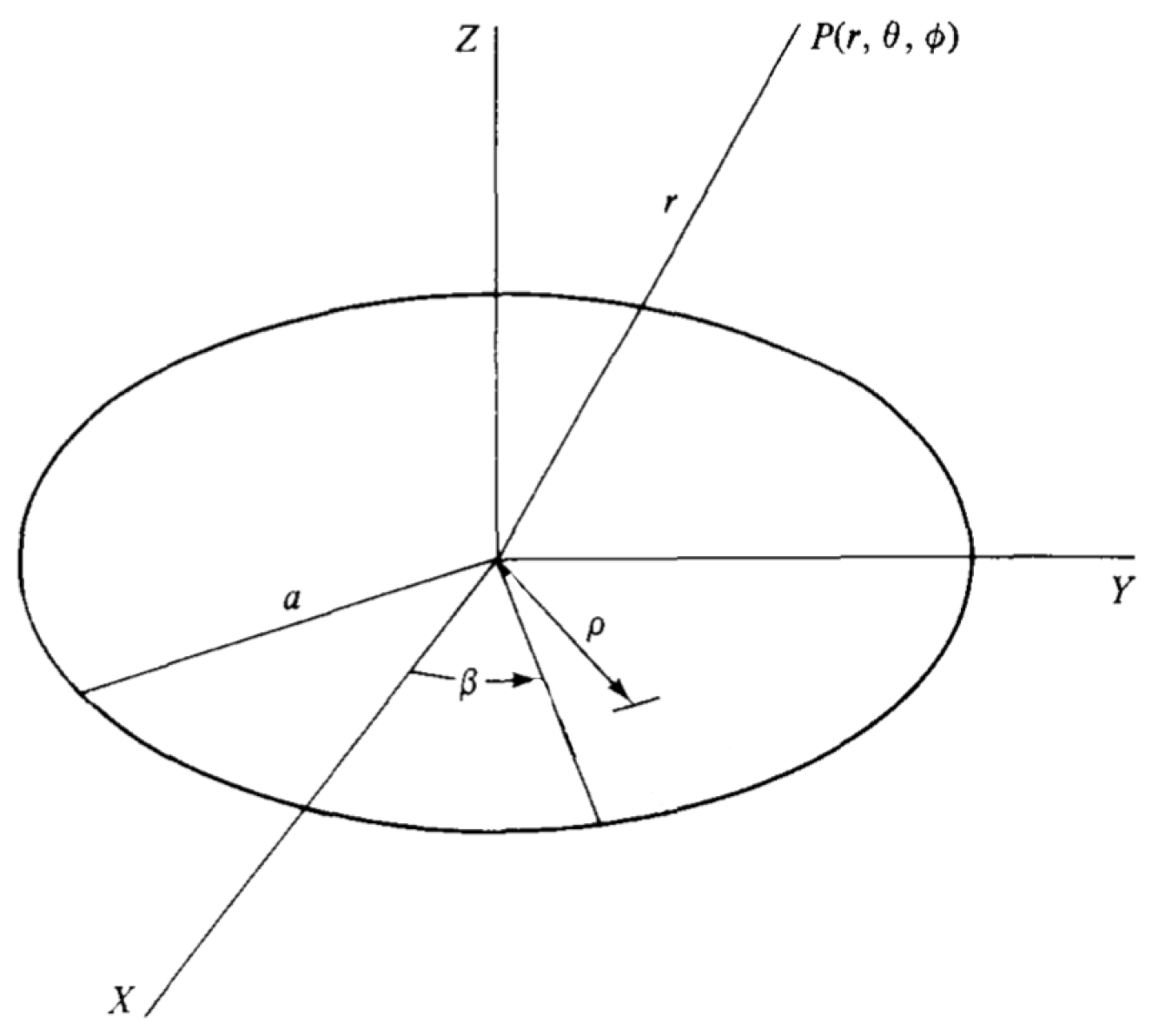


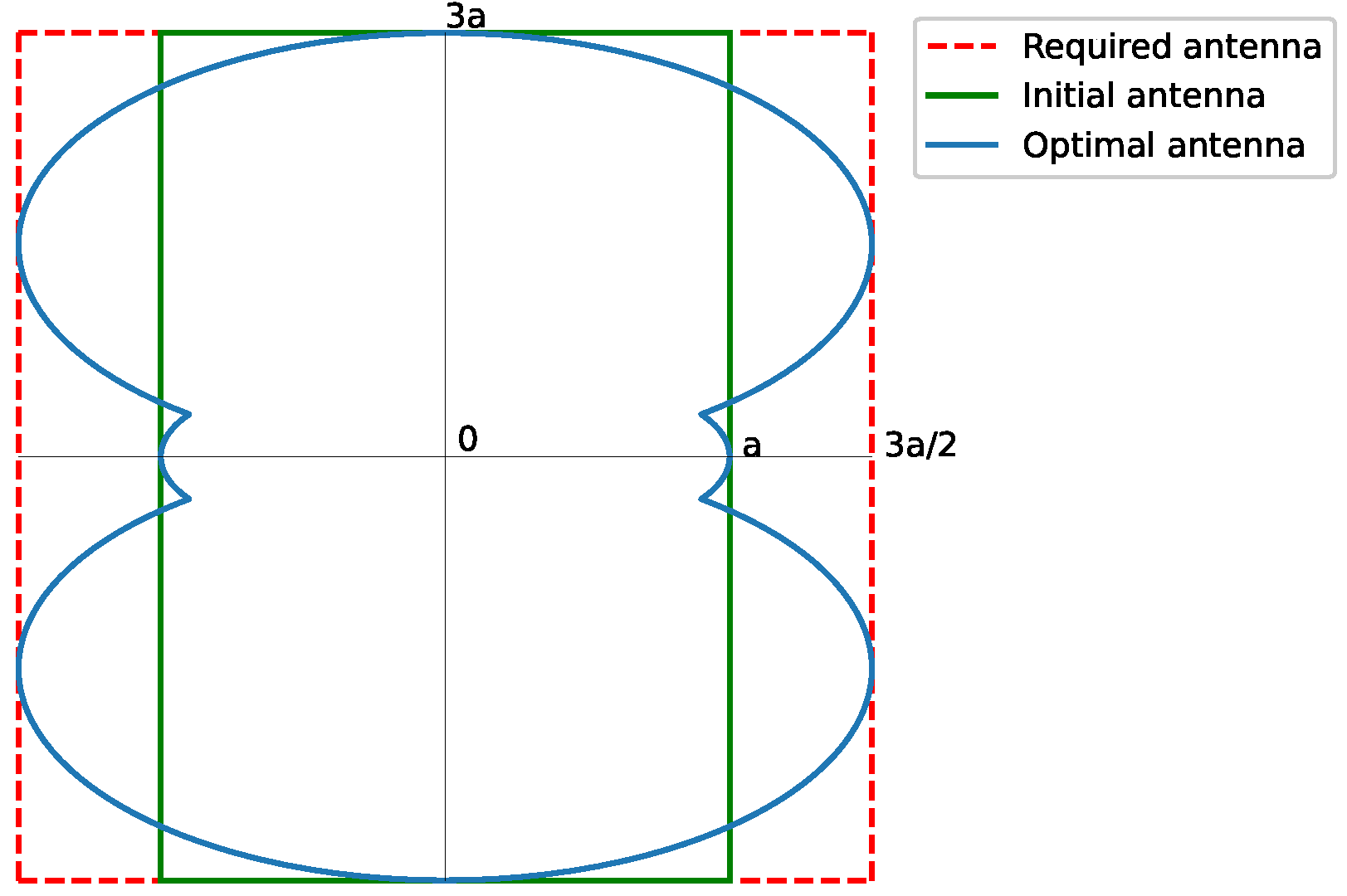
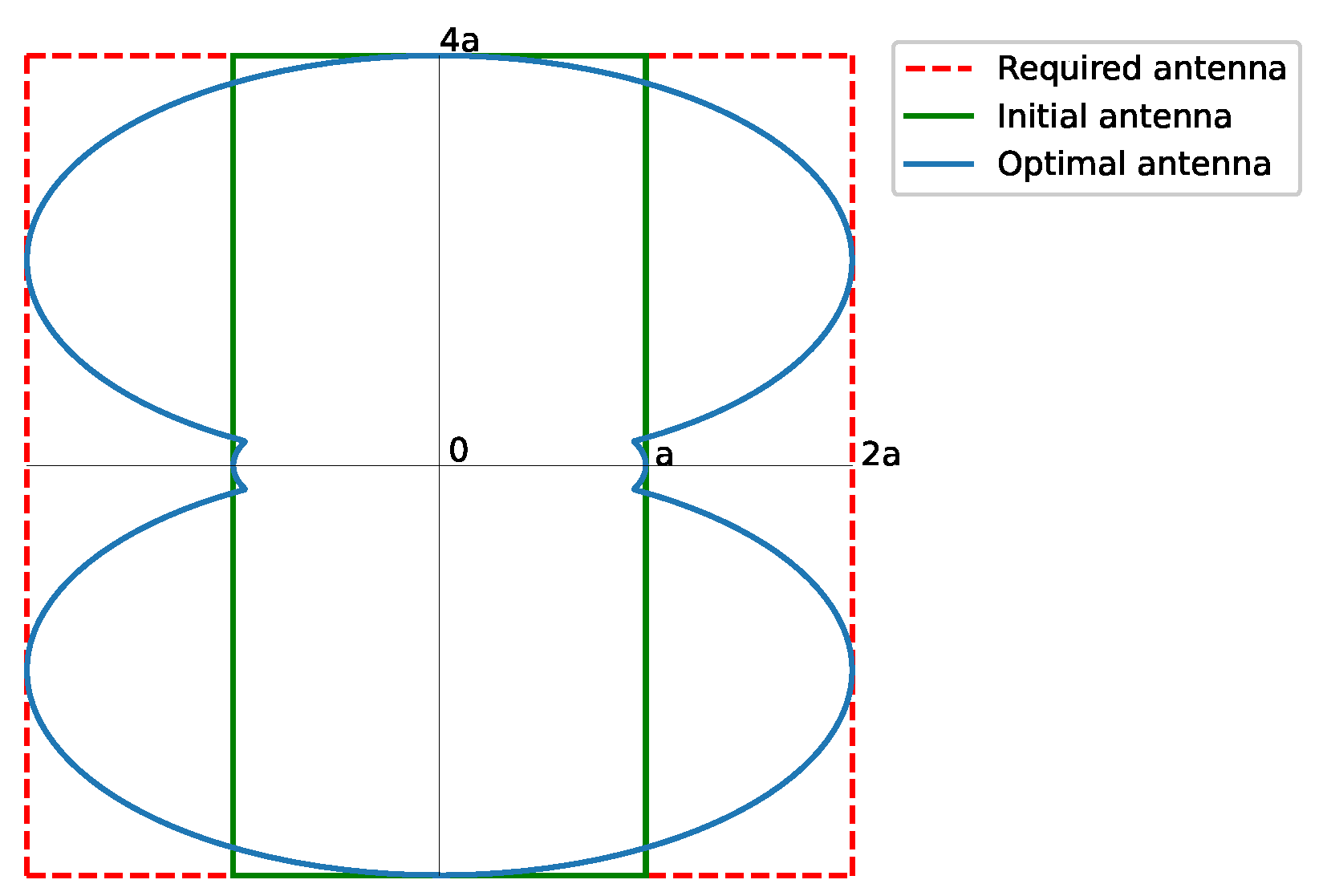


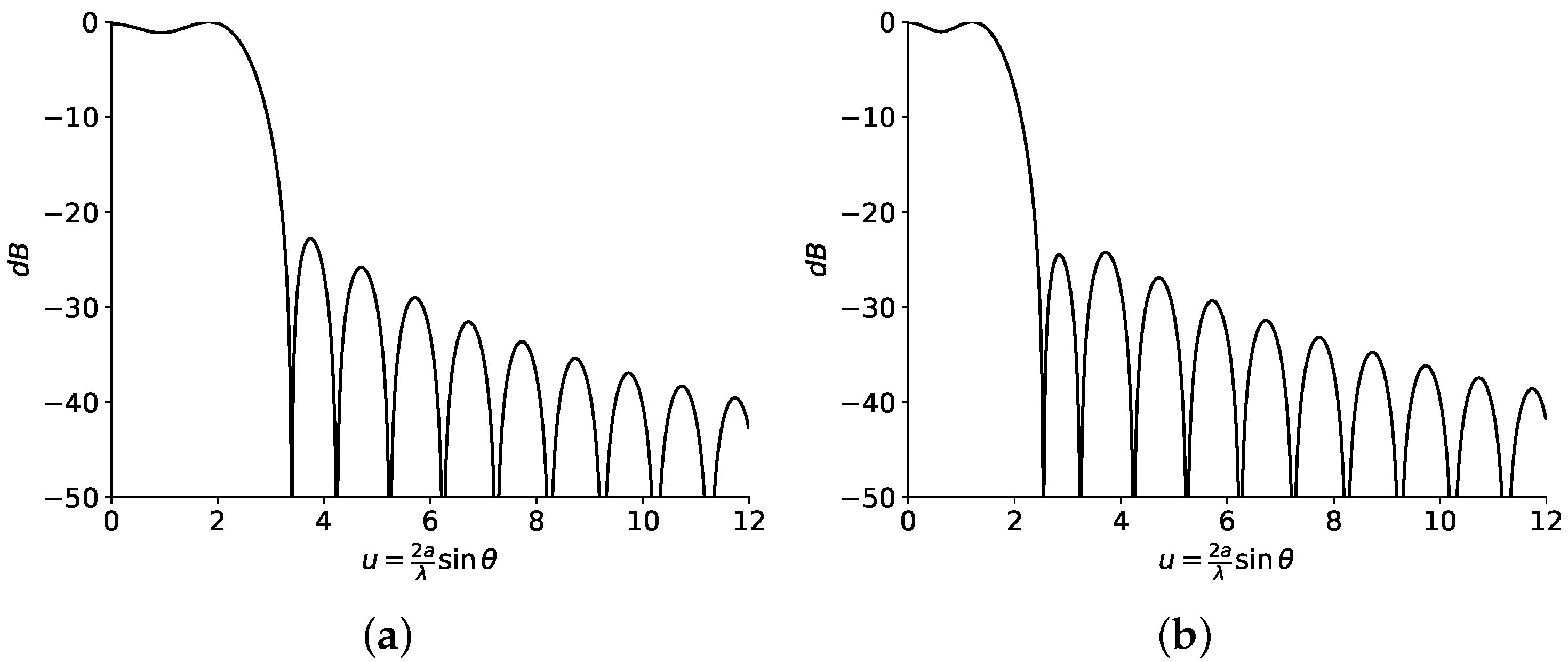
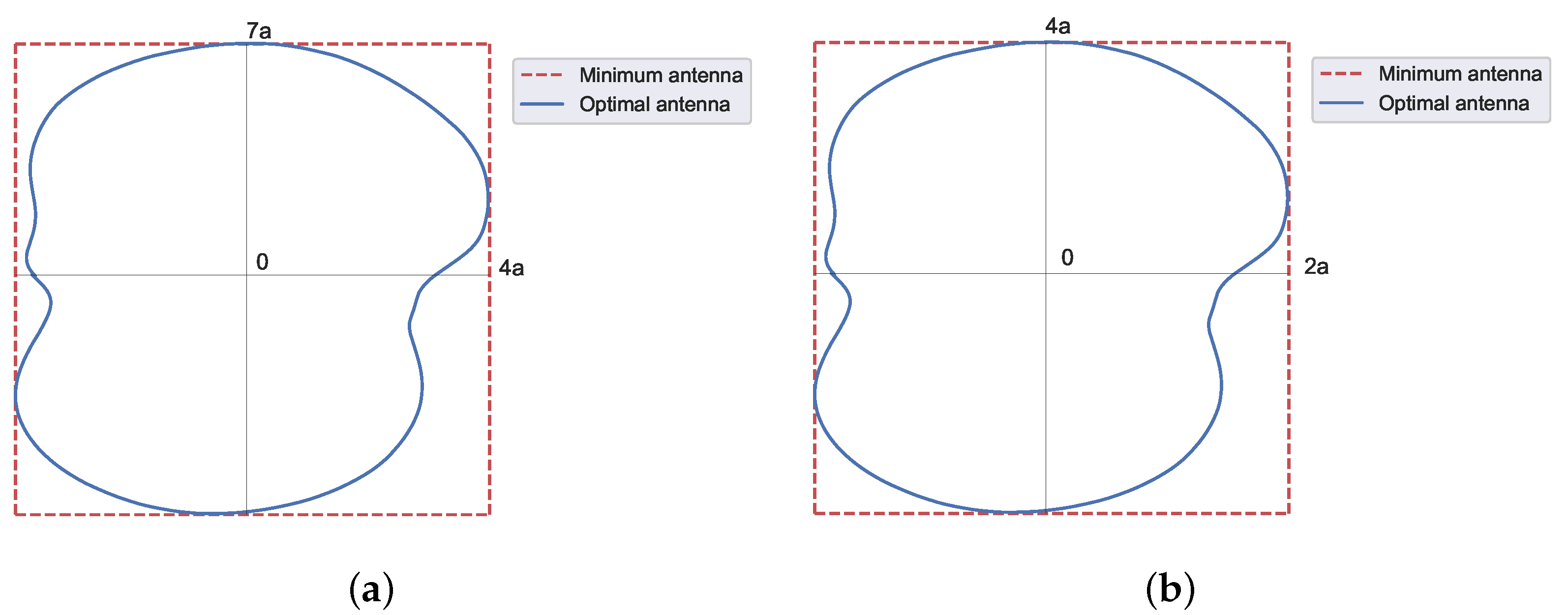
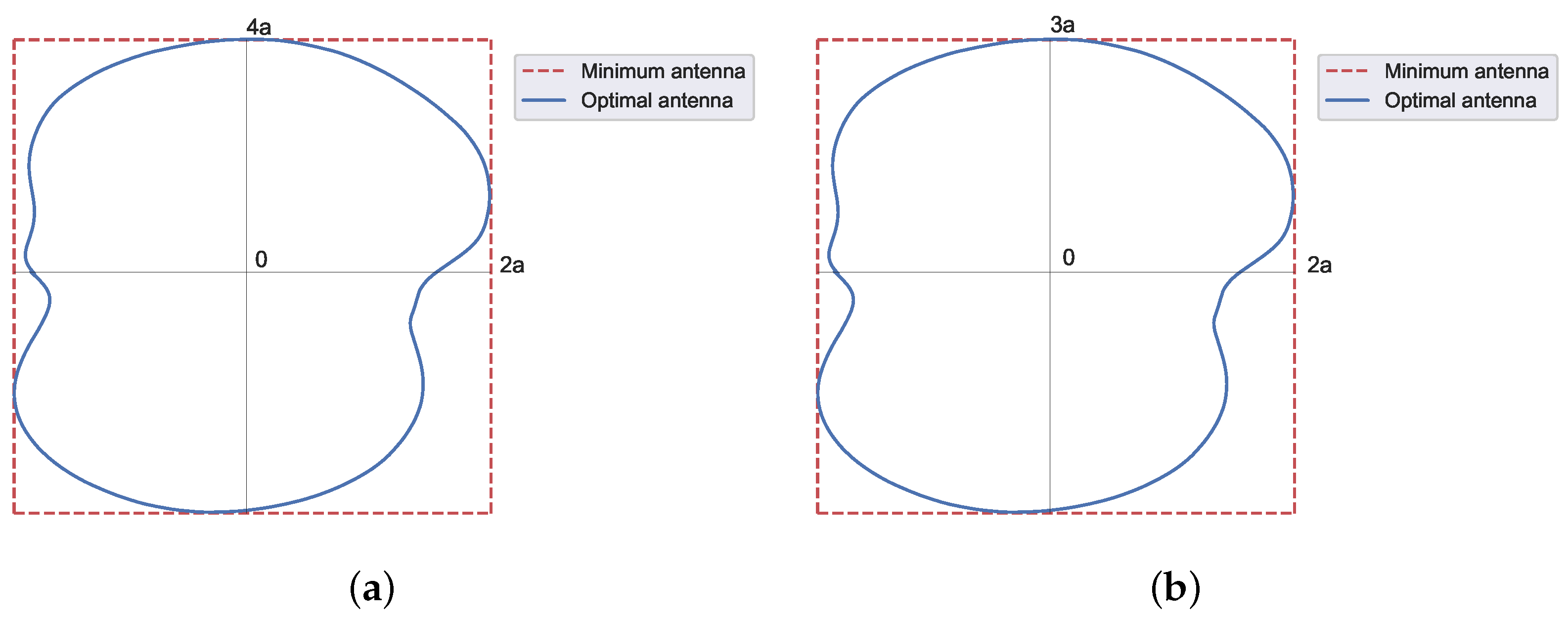
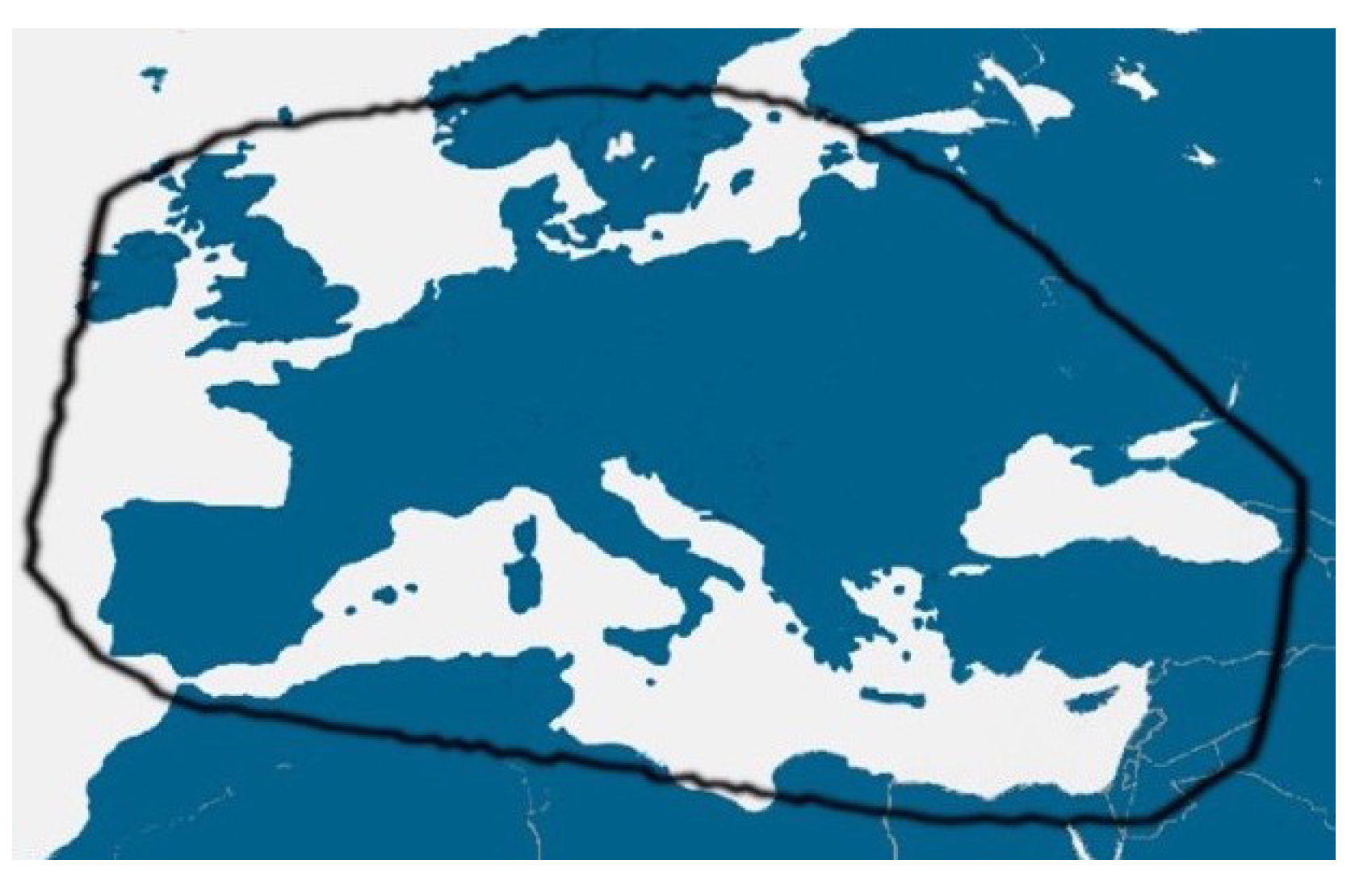
Disclaimer/Publisher’s Note: The statements, opinions and data contained in all publications are solely those of the individual author(s) and contributor(s) and not of MDPI and/or the editor(s). MDPI and/or the editor(s) disclaim responsibility for any injury to people or property resulting from any ideas, methods, instructions or products referred to in the content. |
© 2023 by the authors. Licensee MDPI, Basel, Switzerland. This article is an open access article distributed under the terms and conditions of the Creative Commons Attribution (CC BY) license (https://creativecommons.org/licenses/by/4.0/).
Share and Cite
López-Álvarez, C.; López-Martín, M.E.; Rodríguez-González, J.A.; Ares-Pena, F.J. Maximizing Antenna Array Aperture Efficiency for Footprint Patterns. Sensors 2023, 23, 4982. https://doi.org/10.3390/s23104982
López-Álvarez C, López-Martín ME, Rodríguez-González JA, Ares-Pena FJ. Maximizing Antenna Array Aperture Efficiency for Footprint Patterns. Sensors. 2023; 23(10):4982. https://doi.org/10.3390/s23104982
Chicago/Turabian StyleLópez-Álvarez, Cibrán, María Elena López-Martín, Juan Antonio Rodríguez-González, and Francisco José Ares-Pena. 2023. "Maximizing Antenna Array Aperture Efficiency for Footprint Patterns" Sensors 23, no. 10: 4982. https://doi.org/10.3390/s23104982
APA StyleLópez-Álvarez, C., López-Martín, M. E., Rodríguez-González, J. A., & Ares-Pena, F. J. (2023). Maximizing Antenna Array Aperture Efficiency for Footprint Patterns. Sensors, 23(10), 4982. https://doi.org/10.3390/s23104982








